#Bokeh Python
Explore tagged Tumblr posts
Text
#bokeh#python#software engineering#coding#artificial intelligence#html5 css3#learn to code#htmlcoding#programming#javaprogramming#developer#frontend#css3
2 notes
·
View notes
Text
Python Bokeh – Plotting Hexagon Bins on a Graph

Bokeh is a Python interactive data visualization. It renders its plots using HTML and JavaScript. It targets modern web browsers for presentation providing elegant, concise construction of novel graphics with high-performance interactivity. Bokeh can be used to plot hexagon tiles on a graph. Plotting hexagon tiles on a graph can be done using the hexbin() method of the plotting module. plotting.figure.hexbin() Syntax : hexbin(parameters) Parameters : x : NumPy array of x-coordinates of the hexagon tile bins y : NumPy array of y-coordinates of the hexagon tile bins size : radius of the hexagonal tile bins, default is 1 palette […]
0 notes
Text
Processing Big Data with Python: A Dask Tutorial
Step-by-Step Guide to Processing Big Data with Dask in Python 1. Environment Setup First, install the necessary packages using pip: pip install dask dask-distributed bokeh datashader 2. Basic Dask DataFrame Usage Load a JSON file into a Dask DataFrame and perform basic operations: import dask.dataframe as dd import os # Set a temporary directory for spilling to disk if…
0 notes
Text
23 Best Data Visualization Tools You Can't Miss!

In the age of big data, the ability to transform raw information into compelling visual stories is paramount. Data visualization tools are the key to unlocking insights, communicating complex patterns, and driving data-driven decisions. Whether you're a seasoned data scientist or just starting your journey, having the right tools at your disposal is essential. Let's explore 23 of the best data visualization tools that can help you bring your data to life!
Interactive and Dashboard Tools:
Tableau: A powerful and intuitive tool for creating interactive dashboards and visualizations. Ideal for business intelligence and data exploration.
Power BI: Microsoft's business analytics tool, offering interactive dashboards and rich visualizations. Seamless integration with other Microsoft products.
Looker: A Google Cloud platform for data exploration and visualization. Excellent for creating shareable dashboards and reports.
Domo: A cloud-based platform for business intelligence and data visualization, known for its user-friendly interface.
Sisense: An end-to-end analytics platform that simplifies complex data analysis and visualization.
Qlik Sense: An associative data indexing engine that allows users to explore data freely and discover hidden relationships.
Programming Libraries (Python & R):
Matplotlib (Python): A foundational library for creating static, animated, and interactive visualizations in Python.
Seaborn (Python): Built on top of Matplotlib, Seaborn provides a high-level interface for creating informative statistical graphics.
Plotly (Python & R): A versatile library for creating interactive and web-based visualizations.
Bokeh (Python): Focuses on creating interactive web visualizations for large datasets.
ggplot2 (R): A powerful and elegant visualization package for R, known for its grammar of graphics approach.
Web-Based and Cloud Tools:
Google Data Studio (Looker Studio): A free web-based tool for creating interactive dashboards and reports.
Datawrapper: A user-friendly tool for creating charts and maps for online publications.
Infogram: A web-based tool for creating infographics, charts, and maps.
ChartBlocks: A simple tool for creating charts and graphs without coding.
Specialized Tools:
Gephi: A tool for visualizing and analyzing networks and graphs.
Cytoscape: A software platform for visualizing complex networks, particularly biological networks.
RAWGraphs: A web application to create custom vector-based visualizations from spreadsheet data.
Carto: A location intelligence platform for creating interactive maps and spatial analysis.
Kepler.gl: A high-performance web-based application for visualizing large-scale geospatial data.
Open-Source and Free Tools:
Vega-Lite: A high-level grammar of interactive graphics, built on top of Vega.
Apache Superset: A modern, enterprise-ready business intelligence web application.
Metabase: An open-source business intelligence tool that lets you ask questions about your data and display answers in useful formats.
Choosing the Right Tool:
The best tool for you depends on your specific needs, data complexity, and technical skills. Consider factors like:
Ease of Use: How intuitive is the interface?
Data Connectivity: Can it connect to your data sources?
Visualization Types: Does it offer the charts and graphs you need?
Interactivity: Does it allow for interactive exploration?
Collaboration: Can you share and collaborate on visualizations?
Cost: Is it free, subscription-based, or a one-time purchase?
Enhance Your Data Visualization Skills with Xaltius Academy's Data Science and AI Program:
Mastering data visualization is a crucial skill for any aspiring data scientist. Xaltius Academy's Data Science and AI Program equips you with the knowledge and practical experience to leverage these powerful tools effectively.
Key benefits of the program:
Comprehensive Training: Learn to use Python libraries like Matplotlib and Seaborn for creating compelling visualizations.
Hands-on Projects: Apply your skills to real-world datasets and build a strong portfolio.
Expert Instructors: Learn from experienced data scientists who are passionate about data visualization.
Industry-Relevant Curriculum: Stay up-to-date with the latest trends and technologies.
Career Support: Receive guidance and support to launch your data science career.
By exploring these tools and honing your skills, you can transform data into actionable insights and communicate your findings with clarity and impact. Happy visualizing!
0 notes
Text

Explorando o Universo da Análise de Dados com Python! Python é uma das linguagens de programação mais poderosas e versáteis para análise de dados, e existem inúmeras bibliotecas que tornam essa tarefa mais fácil e eficiente. A imagem ilustra algumas das principais categorias e bibliotecas que você pode explorar para diferentes áreas da análise de dados: 🧮 1. Manipulação de Dados Pandas: Trabalhe com grandes conjuntos de dados e realize operações complexas. NumPy: Ideal para cálculos numéricos e manipulação de arrays. Polars, Vaex, CuPy: Ferramentas otimizadas para trabalhar com grandes volumes de dados. 📊 2. Visualização de Dados Matplotlib, Seaborn, Plotly: Crie gráficos interativos e compreensíveis para análise e apresentação. Bokeh, Altair, Folium: Visualize informações em mapas e gráficos customizados. 📈 3. Análise Estatística SciPy, Statsmodels, PyMC3: Conduza análises estatísticas aprofundadas e aplique modelos probabilísticos aos seus dados. 🧠 4. Machine Learning Scikit-learn, TensorFlow, PyTorch: Ferramentas essenciais para aprendizado de máquina e inteligência artificial. XGBoost, Keras, JAX: Para modelos avançados e deep learning. 🗣️ 5. Processamento de Linguagem Natural (NLP) NLTK, spaCy, BERT: Analise texto, faça traduções e execute tarefas complexas de processamento de linguagem. 🌐 6. Web Scraping Beautiful Soup, Selenium: Extraia dados de websites para alimentar suas análises. 📅 7. Análise de Séries Temporais Prophet, Darts, Sktime: Ferramentas avançadas para prever tendências futuras com base em dados históricos. 🗄️ 8. Operações com Banco de Dados Dask, PySpark, Hadoop: Gerencie e processe grandes volumes de dados distribuídos.
0 notes
Text
How to Select Classes for Data Science That Will Help You Get a Job

It is always exciting and at the same time challenging as one can think of entering a career in data science. As much as organizations start practicing big data in their operations, they are likely to require data scientists. Performance in class greatly determines whether one will succeed in this competitive world hence the need to select the right courses. Read on for this step-by-step guide that will enable you to come up with a realistic plan on which classes to take to acquire skills and make yourself more marketable to employers. Here in this article, Advanto Software will guide you in the selection of classes for Data Science.
Defining the Essence of Classes for Data Science
We have to emphasize that, while considering courses, one should define the basic skills needed for a data scientist’s position. In simple words, data science is an interdisciplinary approach involving statistical analysis, programming, and domain knowledge. The primary skills needed include:
Statistical Analysis and Probability
Programming Languages (Python, R)
Machine Learning Algorithms
Data Visualization Techniques
Big Data Technologies
Data Wrangling and Cleaning
1. In this case, one should try to concentrate on those academic disciplines that form the basis for data science classes.
Statistical Analysis and Probability
Data science’s foundation is statistical analysis. This process comprises knowledge of distributions, testing of hypotheses, and inference-making processes out of data. Classes in statistical analysis will cover: Classes in statistical analysis will cover:
Descriptive Statistics: Arithmetic average, positional average, most frequent value, and measure of variation.
Inferential Statistics: Confidence Intervals, Hypothesis Testing, and Regression Analysis.
Probability Theory: Bayes’ Theorem, probability density and distribution functions and stochastic processes.
Programming for Data Science
To be precise, a data scientist cannot afford to have poor programming skills. Python and R are the two most popular languages in the area. Look for classes that offer:
Python Programming: Development skills in certain libraries, for instance, Pandas, NumPy, and Scikit-learn.
R Programming: This means focus on packages such as; ggplot, dplyr, and caret.
Data Manipulation and Analysis: Approaches to data management and analysis.
2. Master Level Data Science Concepts
Machine Learning and AI
Machine Learning is an important aspect of data science. Advanced courses should delve into:
Statistical Analysis and Probability
Supervised Learning: Supervised techniques like; decision trees, random forest, and Support Vector Machines both classification and regression.
Unsupervised Learning: Supervised methods such as decision trees, regression analysis, logistic regression, neural networks, support vector machines, and Naïve Bayes.
Deep Learning: Some of the most commonly referred neural networks include the following; neural networks, convolutional neural networks (CNNs), and recurrent neural networks (RNNs).
Big Data Technologies
Given the emergence of big data, big data technologies are becoming vital to be acquainted with. Classes to consider include:
Hadoop Ecosystem: Explaining Hadoop, MapReduce, and Hadoop file system (HDFS).
Spark: Learning Apache Spark about Big data faster data processing and analysis.
NoSQL Databases: Functions related to databases such as the use of MongoDB and Cassandra.
3. Emphasize Data Visualization Skills
Visualization Tools: Intensive analytical training in Tableau, Power BI, or D3 tools. Js.
Graphical Representation: Ways of effective and efficient making of charts, graphs, and dashboards required for business and other organizational units.
Interactive Visualization: Challenging language design and creating interesting data-driven narratives with the help of libraries like Plotly or Bokeh.
4. Field Work and Application organizations
Project-Based Learning
Hands-on experience is vital. Opt for classes that offer:
• Capstone Projects: Simulated business scenarios that replicate problems that organizations encounter.
• Case Studies: Solutions to data science problems in different domains and perspectives on the problems in depth.
• Internships and Co-ops: Companies and actual practice with them as a certain advantage.
Industry-Relevant Case Studies Classes For Data Science should include:
Domain-Specific Applications: Use of data science in various fields such as financial and banking, health services, sales, and marketing, or any other field of one’s choice.
Problem-Solving Sessions: Employing real-life business scenarios and finding quantitative solutions to the problems arising.
5. Evaluate the Fairness of the Credentials Presented by the Course Providers
Accreditation and Certification
It should be certain that the classes are from accredited institutions or offer certificates that are well-accepted in the market. Look for:
University-Backed Programs: University or Course / Curriculum offered by an accredited University or an Intuition.
Professional Certifications: Certifications from some of the many professional bodies like the Data Science Council of America or the Institute for Operations Research and the Management Sciences.
Instructor Expertise
The strengths of teachers prove to be very influential.
Instructor Background: Academic background or work experience, the author’s research papers and projects, and accomplishments in the field.
Course Reviews and Ratings: In the present study, information from past students about the usefulness of the course.
6. As for the factors making up the community, one has to consider Flexibility and Learning Formats.
Decide based on your preferences
Online Courses: In some cases, the students’ ability to set their own pace of learning and; Online programs are generally cheaper than their traditional counterparts.
On-Campus Classes: Close contact with the instructors as the students engage in a well-organized learning process.
Conclusion
Choosing the Advanto Software classes for data science is not a mere decision of choosing courses, but rather, it involves identifying the important competencies, extending the course topics to the basic and the modern levels, and also ensuring that the courses provide practical experience as much as possible with the 100% job assurance. It will therefore be beneficial to select courses that provide more extensive coverage on statistics, data programming, machine learning, and data visualization to enhance your chances of getting a job in data science. It is also important to evaluate the credibility of course providers and how learning formats can be adaptable to one’s career paths.
Join us now: advantosoftware.com/
0 notes
Text
What libraries do data scientists use to plot data in Python?
Hi,
When it comes to visualizing data in Python, data scientists have a suite of powerful libraries at their disposal. Each library has unique features that cater to different types of data visualization needs:
Matplotlib: Often considered the foundational plotting library in Python, Matplotlib offers a wide range of plotting capabilities. Its pyplot module is particularly popular for creating basic plots such as line charts, scatter plots, bar graphs, and histograms. It provides extensive customization options to adjust every aspect of a plot.
Seaborn: Built on top of Matplotlib, Seaborn enhances the aesthetics of plots and simplifies the creation of complex visualizations. It excels in generating attractive statistical graphics such as heatmaps, violin plots, and pair plots, making it a favorite for exploring data distributions and relationships.
Pandas: While primarily known for its data manipulation capabilities, Pandas integrates seamlessly with Matplotlib to offer quick and easy plotting options. DataFrames in Pandas come with built-in methods to generate basic plots, such as line plots, histograms, and bar plots, directly from the data.
Plotly: This library is geared towards interactive plots. Plotly allows users to create complex interactive charts that can be embedded in web applications. It supports a wide range of chart types and interactive features like zooming and hovering, making it ideal for presentations and dashboards.
Altair: Known for its concise syntax and declarative approach, Altair is used to create interactive visualizations with minimal code. It’s especially good for handling large datasets and generating charts like bar charts, scatter plots, and line plots in a clear and straightforward manner.
Bokeh: Bokeh specializes in creating interactive and real-time streaming plots. It’s particularly useful for building interactive dashboards and integrating plots into web applications. Bokeh supports various types of plots and offers flexibility in customizing interactions.
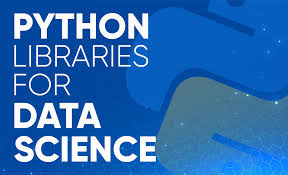
Each of these libraries has its strengths, and data scientists often use them in combination to leverage their unique features and capabilities, ensuring effective and insightful data visualization.
Drop the message to learn more!!
0 notes
Text
Exploring Advanced Python Projects for Experienced Developers
For seasoned Python developers, continuously challenging oneself with complex projects is crucial for growth and skill enhancement. Here are some advanced Python project ideas that can significantly boost your expertise and broaden your programming horizons. Considering the kind support of Learn Python Course in Pune, Whatever your level of experience or reason for switching from another programming language, learning Python gets much more fun.

1. Machine Learning Innovations
Recommendation Engines
Dive into building a recommendation system using collaborative filtering or content-based filtering. This can be applied to various domains like movie suggestions, product recommendations, or even personalized content curation.
Advanced Natural Language Processing (NLP)
Engage in projects involving sentiment analysis, text summarization, or language translation using libraries such as NLTK, SpaCy, or TensorFlow. These projects will deepen your understanding of NLP and its applications.
Predictive Analytics
Develop predictive models using scikit-learn or TensorFlow to forecast stock prices, weather patterns, or sports results. These projects can help you master the art of predictive analytics and data handling.
2. Web Development Mastery with Django or Flask
Comprehensive E-commerce Platforms
Design and implement a robust e-commerce website featuring user authentication, product listings, shopping cart functionality, and payment processing. This will provide you with invaluable experience in web development and management.
Social Networking Applications
Create a social media platform complete with user profiles, posts, comments, and likes. Incorporate real-time updates using WebSockets to enhance user interaction and engagement.
3. Data Science and Analytical Projects
Big Data Handling
Utilize PySpark or Dask to manage and analyze large datasets. Potential projects include processing log files, analyzing social media data, or performing large-scale data aggregation to draw meaningful insights.
Interactive Data Visualization
Develop interactive dashboards using Plotly Dash or Bokeh to visualize complex datasets. These could include financial data, demographic information, or scientific research, providing insightful and engaging visual representations.
4. Automation and Scripting Challenges
Advanced Web Scraping
Create sophisticated web scrapers using BeautifulSoup, Scrapy, or Selenium to extract data from complex websites. Projects could include a price tracker, job aggregator, or research data collection tool.
Workflow Automation
Design scripts to automate repetitive tasks like file organization, email automation, or system monitoring and reporting. This can significantly enhance productivity and efficiency. Enrolling in the Best Python Certification Online can help people realise Python’s full potential and gain a deeper understanding of its complexities.
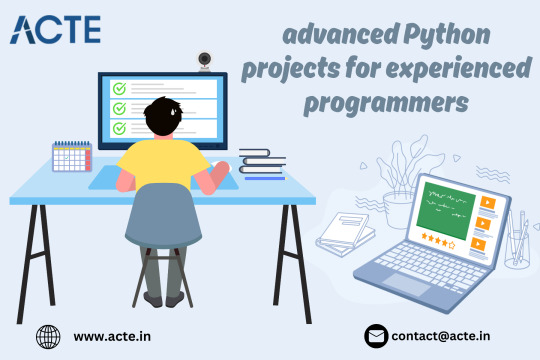
5. Blockchain and Cryptographic Projects
Blockchain Fundamentals
Implement a basic blockchain and simulate transactions, mining, and peer-to-peer networking. Explore creating smart contracts using Ethereum and Solidity to grasp the essentials of blockchain technology.
Cryptographic Systems
Develop and implement cryptographic algorithms like RSA, AES, or hashing techniques. Create secure messaging applications or file encryption tools to delve into cybersecurity.
6. Game Development Ventures
Game AI Development
Develop AI that can play classic games like Chess, Go, or Poker using algorithms such as Minimax, Alpha-Beta Pruning, or Monte Carlo Tree Search. This project will challenge your strategic thinking and AI programming skills.
3D Game Creation
Use a game engine like Pygame or Godot to build a 3D game. Integrate complex physics, graphics, and AI behaviors to create a rich and immersive gaming experience.
7. Internet of Things (IoT) Projects
Smart Home Automation
Construct an IoT-based home automation system using Raspberry Pi or Arduino. Integrate sensors and actuators, and create a web or mobile interface to control home appliances, enhancing convenience and efficiency.
Health Monitoring Systems
Develop a health monitoring system that collects data from wearable devices, processes it, and provides health insights and alerts. This project can have a significant impact on health and wellness.
8. Cybersecurity Development
Penetration Testing Tools
Create tools for network scanning, vulnerability assessment, or exploit development. Projects could include building a custom port scanner, brute-force attack tool, or network traffic analyzer.
Intrusion Detection Systems
Develop an intrusion detection system using machine learning to analyze network traffic and detect suspicious activities or anomalies. This will help you understand and implement advanced network security measures.
Conclusion
Engaging in advanced Python projects can push the boundaries of your programming abilities and introduce you to new technological domains. Each project offers an opportunity to deepen your understanding of complex concepts, experiment with new libraries and frameworks, and build a robust portfolio showcasing your skills. Whether you focus on machine learning, web development, data science, or cybersecurity, these projects provide valuable experience and pave the way for new career opportunities.
#python course#python training#python#technology#tech#python programming#python online training#python online course#python online classes
0 notes
Text
Using Python for Data Visualization with Plotly and Bokeh
Introduction Using Python for Data Visualization with Plotly and Bokeh is a powerful tool for creating interactive and dynamic visualizations. This tutorial will guide you through the process of using these two popular libraries to create a wide range of visualizations, from simple plots to complex dashboards. What Readers Will Learn The basics of data visualization with Plotly and Bokeh How…
0 notes
Text
Data Analyst Course in Pune
Advanced Data Visualisation Techniques: Enhancing Insights for Pune’s Analytics Enthusiasts
Introduction:
Data visualisation is a powerful tool that changes complex data into intuitive visuals, facilitating insights and decision-making. In Pune’s burgeoning analytics industry, mastering advanced data visualisation techniques is crucial for professionals to extract meaningful insights and drive business success. From interactive dashboards to immersive storytelling visuals, advanced visualisation techniques offer Pune’s analytics enthusiasts the means to reveal hidden patterns and trends within data. Enrolling in a Data Analyst Course in Pune provides the foundation to explore and implement these techniques effectively, empowering professionals to excel in the dynamic field of data analytics.
Interactive Dashboards:
Interactive dashboards are dynamic data visualisation tools that allow users to traverse and interact with data in real time. By incorporating filters, sliders, and dropdown menus, interactive dashboards enable users to customise their data views and extract insights tailored to their needs. Professionals undertaking a Data Analyst Course in Pune learn how to design and develop interactive dashboards using tools like Tableau, Power BI, or Python libraries such as Dash and Bokeh. Mastering interactive dashboard creation equips Pune’s analytics enthusiasts with the ability to present complex data in a user-friendly format, fostering deeper exploration and understanding of data insights.
Geospatial Visualisation:
Geospatial visualisation involves mapping data onto geographical locations, providing spatial context to insights and trends. From heatmaps to choropleth maps, geospatial visualisation techniques enable Pune’s analytics professionals to analyse regional variations, identify hotspots, and uncover spatial patterns within data. Enrolling in a Data Analyst Course in Pune introduces professionals to geospatial visualisation tools and techniques, such as Geographic Information Systems software and Python libraries like GeoPandas and Folium. By mastering geospatial visualisation, professionals can gain valuable insights into location-based trends and make informed decisions with spatial awareness.
Time Series Analysis:
Time series analysis involves visualising data to identify trends, seasonality, and anomalies. From line charts to stacked area plots, time series visualisation techniques enable Pune’s analytics enthusiasts to analyse temporal patterns and forecast future trends. A Data Analyst Course provides professionals with the knowledge and skills to analyse time series using tools like R, Python, or specialised visualisation libraries such as Plotly and Matplotlib. Professionals can confidently uncover insights into time-varying phenomena by mastering time series visualisation and making data-driven decisions.
Network Visualisation:
Network visualisation represents relationships and interactions between entities in a graphical format, such as nodes and edges. From social networks to supply chains, network visualisation techniques enable Pune’s analytics professionals to analyse complex relational data and identify key influencers or clusters within networks. Professionals enrolled in a Data Analyst Course explore network visualisation tools and techniques, including network analysis libraries in Python, such as NetworkX and Gephi. Professionals can uncover hidden connections and insights within interconnected datasets by mastering network visualisation, driving impactful decisions in various domains.
Text and Sentiment Analysis:
Text and sentiment analysis involves visualising textual data to extract insights and sentiment trends. From word clouds to sentiment heatmaps, text visualisation techniques enable Pune’s analytics enthusiasts to analyse large volumes of unstructured text data and derive actionable insights. Enrolling in a Data Analyst Course introduces professionals to text analysis tools and techniques, such as Natural Language Processing (NLP) libraries in Python like NLTK and spaCy. Professionals can gain insights into customer feedback, social media conversations, and textual trends by mastering text visualisation, enabling data-driven decision-making in marketing, customer service, and beyond.
Augmented Reality and Virtual Reality Visualisation:
Augmented and Virtual Reality visualisation techniques offer immersive and interactive data exploration experiences. By overlaying data onto real-world environments or creating virtual data landscapes, AR and VR visualisation techniques enable Pune’s analytics professionals to gain new perspectives and insights from their data. A Data Analyst Course in Pune introduces professionals to AR and VR visualisation tools and platforms, enabling them to design and develop immersive data experiences. By mastering AR and VR visualisation, professionals can engage stakeholders in novel ways, enhance data understanding, and drive innovation in data analytics applications.
Conclusion:
In conclusion, advanced data visualisation techniques enhance insights and decision-making for Pune’s analytics enthusiasts. From interactive dashboards to geospatial visualisation, time series analysis, network visualisation, text and sentiment analysis, to augmented and virtual reality visualisation, mastering these techniques empowers professionals to extract actionable insights from data and drive business success. Enrolling in a Data Analyst Course in Pune provides professionals with the knowledge, expertise, and tools to effectively explore and implement advanced visualisation techniques. By leveraging advanced data visualisation, Pune’s analytics enthusiasts can unlock the full potential of their data and make impactful contributions to the dynamic field of data analytics.
Contact Us:
Name: ExcelR — Data Science, Data Analytics Course Training in Pune
Address: 101 A ,1st Floor, Siddh Icon, Baner Rd, opposite Lane To Royal Enfield Showroom, beside Asian Box Restaurant, Baner, Pune, Maharashtra 411045
Phone Number: 098809 13504
Email ID:[email protected]
0 notes
Text
Data Visualization in Python From Matplotlib to Seaborn
Data visualization is an Important aspect of data analysis and machine learning.You can give key insights into your data through different graphical representations. It helps in understanding the data, uncovering patterns, and communicating insights effectively. Python provides several powerful libraries for data visualization, graphing libraries, namely Matplotlib, Seaborn, Plotly, and Bokeh.
Data visualization is an easier way of presenting the data.It may sometimes seem easier to go through of data points and build insights but usually this process many not yield good result. Additionally, most of the data sets used in real life are too big to do any analysis manually.There could be a lot of things left undiscovered as a result of this process.. This is essentially where data visualization steps in.
However complex it is, to analyze trends and relationships amongst variables with the help of pictorial representation.
The Data Visualization advantages are as follows
Identifies data patterns even for larger data points
Highlights good and bad performing areas
Explores relationship between data points
Easier representation of compels data
Python Libraries
There are lot of Python librariers which could be used to build visualization like vispy,bokeh , matplotlib plotly seaborn cufflinks folium,pygal and networkx. On this many Matplotlib and seaborn very widely used for basic to intermediate level of visualization
Matplotlib is a library in Python being two of the most widely used Data visualization is a crucial part of data analysis and machine learning . That enables users to generate visualizations like scatter plots, histograms, pie charts, bar charts, and much more. It helps in understanding the data, uncovering patterns,and communicating insights effectively. Seaborn is a visualization that built on top of Matplotlib. It provides data visualizations that are more typically statistically and aesthetic sophisticated.
Matplotlib;- Matplotlib is a comprehensive library for creating animated, static, , and interactive visualizations in Python. It provides a lot of flexibility and control over the appearance of plots but can sometimes require a lot of code for simple tasks. Matplotlib makes easy things easy and hard things possible.
Basic Example with Matplotlib
Use a rich array of third-party packages build on Matplotli
Export to many file formats
Make interactive figures that can pan,zoom, update.
Embed in Graphical and jupyterLab User Interfaces
Crete public quality plots.
Seaborn;-Seaborn is a python data visualization built on top of Matplotlib . It provides a high-level interface for drawing attractive and informative statistical graphics. It is particularly well-suited for visualizing data from Pandas data frames
Basic Example with Seaborn
Advanced Visualizations
Plots for categorical data
Pairplot for Multivariate Analysis
Combining Matplotlib and Seaborn
Distributional representations
Both Matplotlib and Seaborn are powerful tools for data visualization in Python. Matplotlib provides fine-grained control over plot appearance, while Seaborn offers high-level functions for statistical plots and works seamlessly with Pandas data frames. Understanding how to use both libraries effectively can greatly enhance your ability to analyze and present data.
Can I use Matplotlib and seaborn together?
You can definitely use Matplotlib and Seaborn together in your data visualizations. Since Seaborn Provides an API on top of Matplotlib, you can combine the functionality of both libraries to create more complex and customized plots. Here’s how you can integrate Matplotlib with Seaborn to take advantage of both libraries' strengths.
0 notes
Text
Visualizing Insights: A Pythonic Approach to Data Visualization
In in recent times’s statistics-driven global, the functionality to extract actionable insights from complex datasets is a valuable skill that marketers, analysts and experts all through industries require Data visualization to use specifically on this procedure, developing great insights into unstructured records. In this weblog we discover the energy of records visualization and the manner Python empowers us to unencumber our entire capacity.
Why Data Visualization Matters
Data visualization isn't quite much creating charts and fancy diagrams; It’s approximately reworking raw records into visible representations that supply meaningful insights efficaciously and efficaciously. Visualization permits us to see styles, tendencies and relationships in information that might otherwise continue to be hidden in a sequence of numbers and columns.
By presenting facts visually, we are able to communicate complicated ideas truly and concisely, making it much less difficult for stakeholders to recognize and make informed decisions. Whether it’s discovering market tendencies, studying consumer behavior, or tracking enterprise metrics, statistics visualization is a powerful device for producing actionable insights from statistics
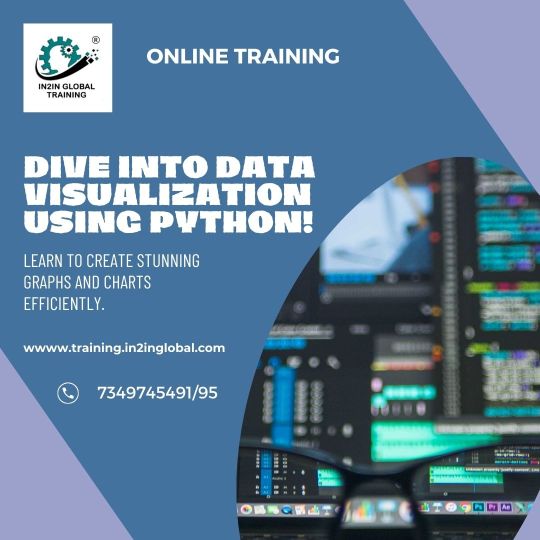
Python advantages
Python has emerged as a famous preference for information evaluation and visualization due to its versatility, ease of use and robust environment of libraries and tools The first information visualization library in Python one in all this is Matplotlib, which gives a bendy framework for developing a massive style of static, interactive and energetic graphs
Matplotlib's intuitive interface allows users to create tremendous plots with only some strains of code, making it best for beginners and skilled statistics analysts further to Matplotlib, Python offers exceptional effective plotting libraries collectively with Seaborn, Plotly, and Bokeh, every with their private strengths and abilties.
Getting Started with Pythonic Data Visualization
To illustrate the strength of facts visualization in Python, let's bear in mind a sensible instance. Suppose we've got a dataset containing income records for a retail enterprise during the last yr. Our intention is to visualise the monthly sales traits and pick out any seasonal styles or anomalies.
The full sales for every month, and plot the month-to-month income tendencies. The resulting visualization gives a clear image of the way sales have evolved over the path of the year, allowing us to become aware of any patterns or developments.
Conclusion
Data visualization is a powerful device for reworking raw statistics into actionable insights. By leveraging the abilities of Python and its wealthy environment of visualization libraries, we are able to create compelling visualizations that speak complicated ideas efficaciously.
Whether you are a statistics analyst, enterprise expert, or researcher, learning the art of information visualization can enhance your capacity to extract insights, make knowledgeable choices, and pressure fine outcomes. With a Pythonic method to records visualization, the opportunities are infinite.
In destiny blog posts, we are able to delve deeper into superior statistics visualization strategies and explore additional Python libraries for growing interactive and dynamic visualizations. Stay tuned for greater insights and courses to your journey to learn Data visualization with Python .
0 notes
Text
Best 25 Python Libraries for Data Science in 2024
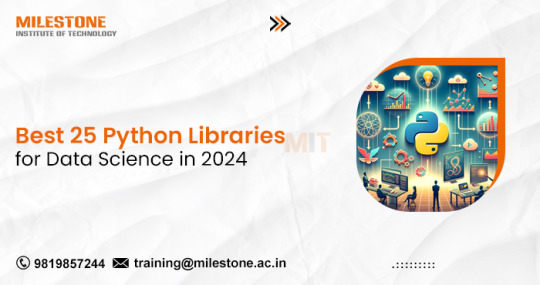
In the ever-evolving landscape of data science, Python continues to reign supreme as the language of choice. With its simplicity, versatility, and a vast ecosystem of libraries, Python empowers data scientists to tackle complex problems with ease. As we step into 2024, the arsenal of Python libraries for data science has only grown richer and more diverse. In this blog post, we’ll delve into the top 25 Python libraries that are indispensable for data scientists in 2024.
NumPy:
The cornerstone of numerical computing in Python, NumPy provides powerful array operations and mathematical functions essential for data manipulation and analysis.
Pandas:
Pandas remains a fundamental library for data manipulation and analysis, offering intuitive data structures and tools for handling structured data effectively.
Matplotlib:
As a versatile plotting library, Matplotlib enables data visualization with a wide range of plots and customization options, facilitating insightful data exploration.
Seaborn:
Built on top of Matplotlib, Seaborn specializes in creating attractive and informative statistical graphics, making it invaluable for visualizing complex datasets.
Scikit-learn:
This comprehensive machine learning library provides simple and efficient tools for data mining and analysis, covering various algorithms and model evaluation techniques.
TensorFlow:
TensorFlow continues to lead the way in deep learning, offering a flexible framework for building and training neural networks of any scale.
PyTorch:
Known for its dynamic computational graph and ease of use, PyTorch has gained popularity among researchers and practitioners for developing cutting-edge deep learning models.
Keras:
With its high-level API and seamless integration with TensorFlow and other backend engines, Keras simplifies the process of building and experimenting with neural networks.
SciPy:
SciPy builds upon NumPy to provide additional functionality for scientific computing, including optimization, integration, interpolation, and more.
Statsmodels:
This library offers a wide range of statistical models and tests for exploring relationships in data and making data-driven decisions.
NLTK (Natural Language Toolkit):
NLTK remains a go-to library for text processing and natural language understanding, providing tools for tokenization, stemming, tagging, and parsing.
Gensim:
Gensim specializes in topic modeling and document similarity analysis, making it indispensable for tasks such as document clustering and information retrieval.
XGBoost:
As a powerful gradient boosting library, XGBoost excels in predictive modeling tasks, delivering state-of-the-art performance across various machine learning competitions.
LightGBM:
Developed by Microsoft, LightGBM is another high-performance gradient boosting library optimized for large-scale datasets and distributed computing.
CatBoost:
CatBoost stands out for its ability to handle categorical features seamlessly, making it a preferred choice for data scientists working with tabular data.
NetworkX:
For analyzing complex networks and graphs, NetworkX offers a comprehensive set of tools and algorithms, enabling the exploration of network structures and dynamics.
OpenCV:
OpenCV remains the go-to library for computer vision tasks, providing a rich set of tools for image processing, feature detection, object recognition, and more.
Dask:
Dask scales Python workflows to parallel and distributed environments, enabling efficient processing of large datasets that exceed the memory capacity of a single machine.
Hugging Face Transformers:
With pre-trained models for natural language understanding and generation, Hugging Face Transformers facilitates rapid development and deployment of NLP applications.
Plotly:
Plotly stands out for its interactive and web-based visualizations, allowing data scientists to create engaging dashboards and presentations directly from Python.
Bokeh:
Bokeh offers interactive visualization capabilities with a focus on creating web-ready plots and applications for sharing insights with a broader audience.
Streamlit:
Streamlit simplifies the process of building data apps and interactive web interfaces from Python scripts, enabling rapid prototyping and deployment.
PyCaret:
PyCaret streamlines the machine learning workflow with automated model selection, hyperparameter tuning, and deployment-ready pipelines, ideal for quick experimentation.
Featuretools:
Featuretools automates feature engineering by generating rich features from raw data, enabling data scientists to focus on model building rather than manual feature creation.
Scrapy:
For web scraping and data extraction tasks, Scrapy offers a powerful framework for building scalable and efficient web crawlers, extracting data from websites with ease.
Conclusion
In conclusion, Python continues to dominate the field of data science in 2024, fueled by a vibrant ecosystem of libraries catering to diverse needs across domains. Whether you're analyzing data, building machine learning models, or developing AI-powered applications, these 25 Python libraries serve as indispensable tools in the data scientist's toolkit, empowering innovation and discovery in the ever-expanding realm of data science.
0 notes
Text
Essential Python Tools for Modern Data Science: A Comprehensive Overview

Python has established itself as a leading language in data science due to its simplicity and the extensive range of libraries and frameworks it offers. Here's a list of commonly used data science tools in Python:
Data Manipulation and Analysis:
pandas: A cornerstone library for data manipulation and analysis.
NumPy: Provides support for working with arrays and matrices, along with a large library of mathematical functions.
SciPy: Used for more advanced mathematical and statistical operations.
Data Visualization:
Matplotlib: A foundational plotting library.
Seaborn: Built on top of Matplotlib, it offers a higher level interface for creating visually pleasing statistical plots.
Plotly: Provides interactive graphing capabilities.
Bokeh: Designed for creating interactive visualizations for use in web browsers.
Machine Learning:
scikit-learn: A versatile library offering simple and efficient tools for data mining and data analysis.
Statsmodels: Used for estimating and testing statistical models.
TensorFlow and Keras: For deep learning and neural networks.
PyTorch: Another powerful library for deep learning.
Natural Language Processing:
NLTK (Natural Language Toolkit): Provides libraries for human language data processing.
spaCy: Industrial-strength natural language processing with pre-trained models for various languages.
Gensim: Used for topic modeling and similarity detection.
Big Data Processing:
PySpark: Python API for Apache Spark, which is a fast, in-memory data processing engine.
Web Scraping:
Beautiful Soup: Used for pulling data out of HTML and XML files.
Scrapy: An open-source and collaborative web crawling framework.
Requests: For making various types of HTTP requests.
Database Integration:
SQLAlchemy: A SQL toolkit and Object-Relational Mapping (ORM) library.
SQLite: A C-language library that offers a serverless, zero-configuration, transactional SQL database engine.
PyMongo: A Python driver for MongoDB.
Others:
Jupyter Notebook: An open-source web application that allows for the creation and sharing of documents containing live code, equations, visualizations, and narrative text.
Joblib: For saving and loading Python objects, useful when working with large datasets or models.
Scrapy: For web crawling and scraping.
The Python ecosystem for data science is vast, and the tools mentioned above are just the tip of the iceberg. Depending on the specific niche or requirement, data scientists might opt for more specialized tools. It's also worth noting that the Python data science community is active and continually innovating, leading to new tools and libraries emerging regularly.
0 notes
Text
Principles of Urban Informatics Assignment 9 solved
Introduction The purpose of this assignment is to get familiarized with map plotting techniques. You will use bokeh/python to produce plots, whose documentation is available at http:// bokeh.pydata.org/. In this assignment we are going to create map visualizations that help understand 311 data for NYC. Steps to complete this assignment include downloading data from the NYC Open Data website into…
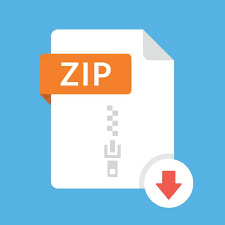
View On WordPress
0 notes
Text
Why Is Python a Language of Choice for Data Scientists?
Welcome to this article about Python as a language of choice for data scientists. In this piece, we will delve into the reasons why Python a popular programming language for data science. We will explore the advantages of using Python for data science, libraries that can be used, popular machine learning algorithms, data visualization techniques and so much more.
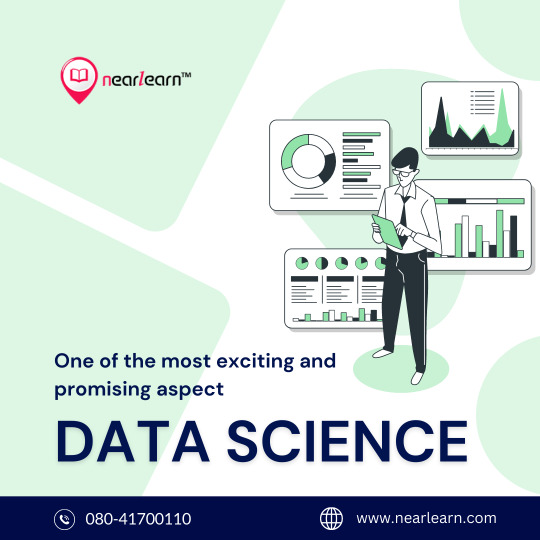
NEARLEARN.COM
Brief history of Python for data science
Python, originally created in 1991 by Guido van Rossum, has been growing steadily over the past years and has become one of the most widely used programming languages around the world. Python’s simple syntax and its ability to integrate with other code and languages make it a key programming language in data science.
Explanation of why Python is so popular among data scientists
Python’s popularity in data science is largely due to the versatility and flexibility of the language. Python is used for data analysis, algorithms and visualization which are the essential components in data science. Besides, Python is free and open-source, which makes it accessible to anyone who wants to learn about data science.
Advantages of Python for Data Science
Python comes with several key advantages that make it the go-to language for data science. Below are some of the reasons why Python is preferred over other programming languages for data science:
Clear and concise syntax
Python has a readable and straightforward syntax that makes it easy to learn and write in. Its coding style and guidelines make it easier for other developers to understand the code.
Python Libraries for Data Science
Python has several libraries that make data science tasks easily achievable. Below are some of the most popular libraries for data science:
Pandas for data manipulation and analysis
NumPy for numerical computing
Scikit-learn for machine learning
Matplotlib for data visualization
Machine Learning with Python
Python is the most commonly used programming language when it comes to machine learning. Some of the advantages of using Python for machine learning include libraries such as TensorFlow and PyTorch, which offer robust and scalable machine learning solutions.
Data Visualization with Python
Python has several libraries for data visualization, making it easy for data scientists to convert data into graphs and charts for easier interpretability. Some of the most popular libraries for visualization include:
Seaborn
Plotly
Bokeh
ggplot2
Working with Big Data in Python
Python allows data scientists to work with big data through popular libraries such as Apache Spark, Dask and Hadoop.
Data Cleaning in Python
Data cleaning is a crucial step in data science, and Python has several libraries to make data cleaning faster, including Pandas and NumPy.
Data Analysis in Python
In Python, libraries like Pandas, NumPy and SciPy make data analysis more effortless and help in converting raw data into actionable insights.
Web Scraping in Python
Python has several libraries such as Beautiful Soup, scrapy, and requests which can be used for web scraping. This can be used in the collection of unstructured data from the web.
Natural Language Processing in Python
Python's libraries, including nltk, spaCy, gensim and textblob, make natural language processing easier and more accessible.
Model Deployment with Flask
Flask is a lightweight and simple Python web framework, which can be used to deploy machine learning models as web applications and APIs.
Python vs Other Languages
Python has several benefits over other programming languages like R, SAS and MATLAB. Python is faster, more flexible, has a broader community and has more libraries compared to these other languages.
Applications of Python in Data Science
Python can be used in data science in different industries, including healthcare, finance, energy, and manufacturing. Below are some real-life examples of Python in data science:
The National Aeronautics and Space Administration (NASA) uses Python to handle and analyse large amounts of data from planetary missions and telescopes.
JP Morgan uses Python for financial analytics and data visualization.
Google uses Python for web crawling, data analysis and machine learning.
Netflix uses Python for personalized movie recommendations using machine learning.
Career Opportunities for Python Data Scientists
Python offers numerous career opportunities for data scientists, and the demand is growing in all industries. Some popular job titles include:
Data Scientist
Machine Learning Engineer
Data Analyst
Data Engineer
Business Analyst
AI Research Scientist
Challenges in Data Science with Python
Even though Python is versatile and flexible, it's not without its drawbacks. Some common challenges faced by data scientists while using Python includes memory limitations, compatibility issues with other programming languages, and lack of library support. However, many of these challenges can be easily mitigated or solved by proper coding and system configuration.
Future of Python in Data Science
With the explosion of data, Python's future in data science is bright. Python is becoming more accessible, with better libraries and resources by the day. Some predictions for Python in data science in the future include:
More support from big tech companies, leading to more speed and scalability in Python libraries.
Integration of Python with other languages for better code efficiency.
Increased open-source contributions to Python to increase its capabilities.
Conclusion
Python is a versatile and flexible language that can be used in many industries and for various data science tasks. Python's simplicity and ease of use, along with its rapidly growing community, make it an obvious choice for data science. Hopefully, this article has given you a better idea of why data scientists worldwide continue to choose Python for their daily work.
Frequently Asked Questions
Some commonly asked questions regarding Python in data science are:
What is Python?
Why is Python so popular for data science?
What are some popular Python libraries for data science?
What are the applications of Python in data science?
What future innovations can we expect to see in Python for data science?
0 notes